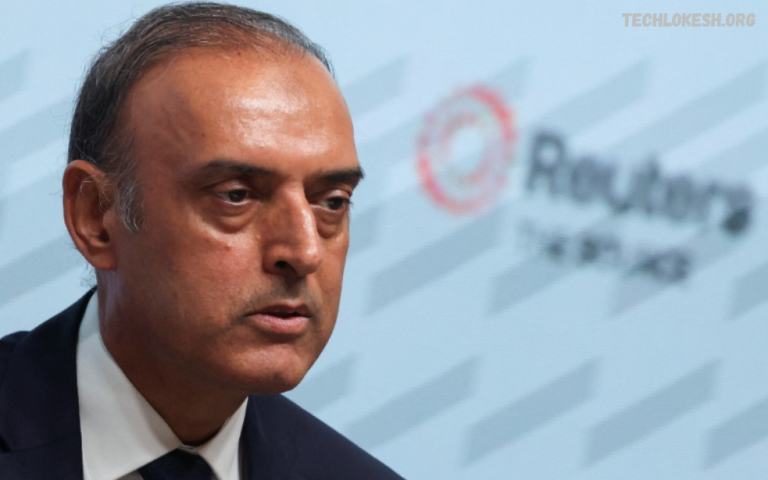Pakistan is on the brink of a significant transformation in its financial landscape with the upcoming pilot launch of its digital currency. As the world increasingly embraces digital money, Pakistan is stepping forward to join the revolution, aiming to modernize how people transact and interact with the economy. This digital currency, backed by the State Bank of Pakistan, promises to bring convenience, security, and efficiency to everyday payments.
The pilot launch is an exciting first step toward a cashless future. It will enable users to experience a new way of making payments directly through their smartphones, using either physical cash or traditional banking methods. The government hopes this move will boost financial inclusion, making it easier for everyone, including those in remote areas, to access financial services.
Additionally, the digital currency will help reduce costs related to printing and handling cash, while increasing transparency and reducing fraud. As Pakistan embarks on this digital journey, individuals and businesses alike need to understand how this new system works, its benefits, and the changes it might bring to daily life. The insights are to fine-tune the system before a nationwide rollout. Stay tuned as Pakistan takes a bold step into the future of money.
Understanding Central Bank Digital Currencies (CBDCs)
Bank Digital Currencies, or CBDCs, are a new form of money issued directly by a country’s central bank in digital form. Unlike cryptocurrencies like Bitcoin, which are decentralized and often volatile, CBDCs are government-backed and designed to provide a stable, secure means of making payments and storing value.
Think of a CBDC as the digital version of the cash in your wallet, but instead of physical notes and coins, it exists electronically on your phone or computer. This means you can use it for everyday transactions, such as shopping, paying bills, or sending money to friends, quickly and easily.
CBDCs aim to make financial systems more efficient by reducing costs associated with printing and handling cash. They also enhance transparency, helping to prevent fraud and illegal activities. Additionally, by making digital money more accessible, CBDCs can integrate into the formal financial system, especially for those who don’t have traditional bank accounts.
The Current State of Pakistan’s Financial System
Pakistan’s financial system is steadily evolving but still faces several challenges. While traditional banking remains the backbone of economic transactions, a significant portion of the population, especially in rural areas, remains unbanked or underbanked. This limits access to essential financial services, including loans, savings, and digital payments.
The government and financial institutions have made efforts to improve financial inclusion through initiatives like mobile banking and branchless banking, which have helped increase access to basic financial services. Additionally, the system grapples with issues such as limited financial literacy, concerns over security, and the need for better infrastructure to support digital transactions at scale. Despite these hurdles, recent technological advancements and regulatory support are laying the foundation for a more robust and inclusive financial ecosystem.
Key Features of Pakistan’s Digital Currency
Pakistan’s digital currency is designed with several key features to make financial transactions easier, safer, and more accessible for everyone. First, it is backed and regulated by the State Bank of Pakistan, ensuring stability and trust in the system. Unlike traditional cash, this digital currency will be stored electronically, allowing users to make instant payments through smartphones or other digital devices without needing a bank account.
Another essential feature is increased financial inclusion. The digital currency aims to bring millions of people who currently do not use formal banking services into the digital economy. It will also reduce reliance on physical cash, helping to lower costs associated with printing, handling, and transporting money.
Security is a top priority; the digital currency will use advanced technology to protect against fraud and cyber threats, ensuring that users’ funds and transactions are safe. Transparency is also improved, which can help reduce corruption and illegal activities.
Reasd Also: Breaking News – Nepra Slashes Power Prices – What This Means for Your Energy Bills!
The Goals of the Upcoming Pilot Launch
The upcoming pilot launch of Pakistan’s digital currency has several vital goals aimed at transforming the country’s financial landscape. One of the primary objectives is to test the technology and infrastructure behind the digital currency. This phase will help identify any technical issues and gather feedback from users to improve the system before a wider rollout.
Another key goal is to promote financial inclusion by making digital payment options accessible to people who currently lack access to traditional banking services. The pilot aims to demonstrate how digital currency can reach underserved communities, helping them participate more fully in the economy.
The launch also seeks to reduce the dependence on physical cash, which can be costly to produce and manage. By encouraging the use of digital currency, the government aims to reduce these costs and enhance transaction efficiency.
Potential Benefits of Digital Currency for Pakistan
Digital currency holds significant potential benefits for Pakistan’s economy and its people. One of the most essential advantages is increased financial inclusion. By providing easy access to digital payments, more people—especially those in remote or underserved areas—can participate in the formal financial system, helping to reduce poverty and promote economic growth.
Another key benefit is the convenience and speed of transactions. Digital currency enables instant payments and transfers, reducing the need for cash and making everyday transactions smoother for both consumers and businesses. This efficiency can boost economic activity and support small and medium-sized enterprises.
Digital currency also helps reduce costs associated with printing, handling, and transporting physical cash. This can save the government and financial institutions significant resources over time.
Frequently Asked Questions
How can I access and use the digital currency?
Users will be able to access it through authorized digital wallets or mobile apps linked to their accounts or mobile numbers.
Will using digital currency incur additional fees?
The pilot aims to keep transaction fees low or free to encourage adoption, but details will be clarified as the program develops.
How will digital currency help financial inclusion?
It enables people without bank accounts to participate in digital transactions, especially in rural or underserved areas.
Can businesses accept digital currency payments?
Yes, businesses will be able to accept payments digitally, making transactions faster and more convenient.
When will the digital currency be available nationwide?
Following the pilot phase, the government will evaluate the results and plan a broader rollout; however, an exact timeline has not yet been announced.
Conclusion
Pakistan‘s digital currency initiative marks a bold step toward modernizing the nation’s financial system. With the upcoming pilot launch, the country is testing not just new technology, but a new way of thinking about money—one that is faster, more inclusive, and more secure. By reducing reliance on physical cash, improving access to financial services, and encouraging transparent transactions, digital currency has the potential to reshape how people and businesses interact with the economy.

